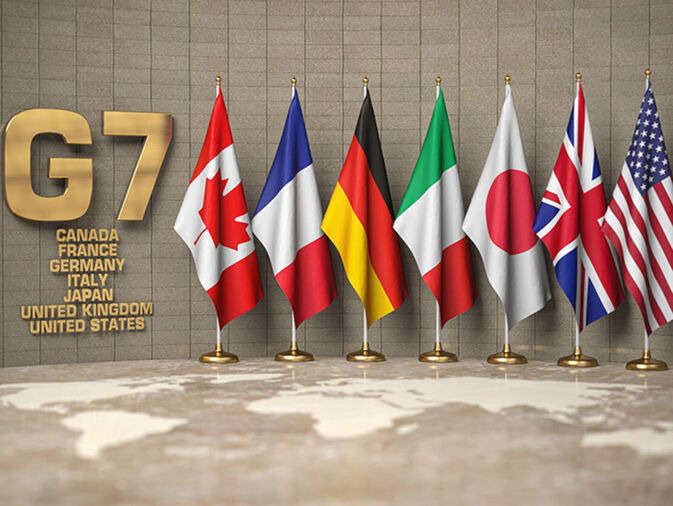The six nations out of the Group of 7 (G7) leaders tried to show the wealthy nations still have the clout to shape world events despite the early departure of the US President, Donald Trump. The G7 summit wraps up on Tuesday after the exit of Trump, while the Canadian Prime Minister Mark Carney and his counterparts from the UK, France, Germany, Italy, and Japan were joined by the Ukrainian President, Volodymyr Zelensky, and NATO chief Mark Rutte.
All the leaders gathered to discuss Russia’s relentless war on its neighbouring country of Ukraine. Zelensky also said that, according to the authorities, the overnight Russian attacks had killed more than 15 people and injured 150+ in their country. Affected people and “our families had a very difficult night. One of the biggest attacks from the very beginning of the war.”
“We need support from allies…” said Zelensky.
Just before exiting the meeting of the world’s topmost countries in terms of market and defence, the US President joined the other leaders in issuing a statement saying that Iran “can never have a nuclear weapon” and called for a “de-escalation of hostilities in the Middle East, including a ceasefire in Gaza.” This big unanimity can be seen as a modest measure of success for the G7 group.
British Prime Minister Keir Starmer also said that he had sat next to Trump at Monday night’s dinner and has no doubt in his mind on the level of agreement there was in relation to the words that were then issued immediately.
In the meantime, the members of the Trump street team remained in Canada. This included the Treasury Secretary, Scott Bessent, US Trade Representative Jamison Greer, and Kevin Hassett, Director of the National Economic Council. Setting the table for other world leaders, who met on Tuesday with Zelensky, Bessent represented the US at the gathering.
Trump returned to the US overnight, flying back to Washington, and said aboard Air Force One that, “We did at G7, we had a good G7.” However, Kremlin spokesman Dmitry Peskov said on Tuesday that the G7 looked “very pale and quite useless” compared to “for example, such formats as the G20.”
History behind G7
The Group of Seven is an intergovernmental political and economic forum consisting of Canada, France, Germany, Italy, Japan, and the United Kingdom, along with the US. There is also, additionally, the European Union as a non-enumerated member. The group is organised around the shared values of pluralism, liberal democracy, and representative governments of the world, who are also major IMF advanced economies.
The group originated from an ad hoc gathering of finance ministers in 1973. Since then, the G7 has been a formal high-profile venue for discussing and coordinating solutions to major global issues in areas of trade, security, economics, and climate change. Each member’s head of state or government, along with the European Union Commission President, annually meet at the G7 summit representing the nations. International organisations are often invited as guests.
Russia remained a formal member of the summit from 1997 (as part of the G8) until it was expelled in 2014.
The G7 is not based on a treaty and has no permanent secretariat office, but is organised through a presidency that rotates annually amongst the member states. For the year 2025, Canada presides over the summit and is also hosting it.
PM Modi In G7
Prime Minister Narendra Modi arrived in Canada from Cyprus in the early hours of Tuesday and posted on social media platform X: “Landed in Calgary, Canada to take part in G7. Will be meeting various leaders of the summit and sharing my thoughts on important global issues. Will also be emphasising the priorities of the Global South.”
The Global South is not part of the G7, which only comprises some strong economies from the Global North.


